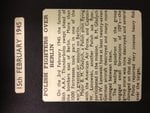- Thread starter
- #21
It is not any of the first 3 and even the 4th isn't right.
It isn't that P-51 has it's maximum range at high speed. It doesn't. It is just that it is low enough in drag that it CAN cruise at those speeds AND cover the required distance with the available fuel.
Thanks for the info. This makes much more sense than my silly-assed theories.
To be honest, I was grabbing at straws because something had to be really bizzare with the P-51 if it was more efficient at higher speeds. The only thing that made sense to me was some very strange artifact from the engine or propeller.
I am new to this forum, so I do not know yet where to find the references to check on something that doesn't seem right to me. As you can tell, when something does not make sense to me, I am very good at coming up with half-baked theories.

